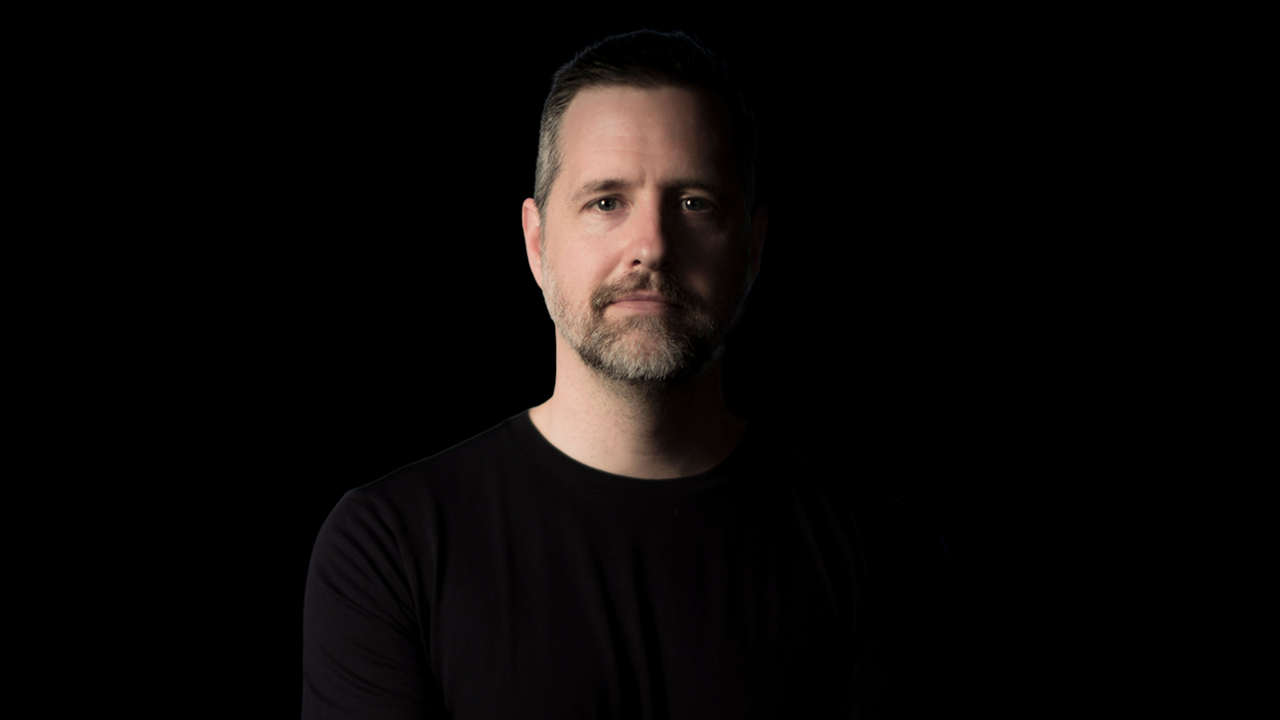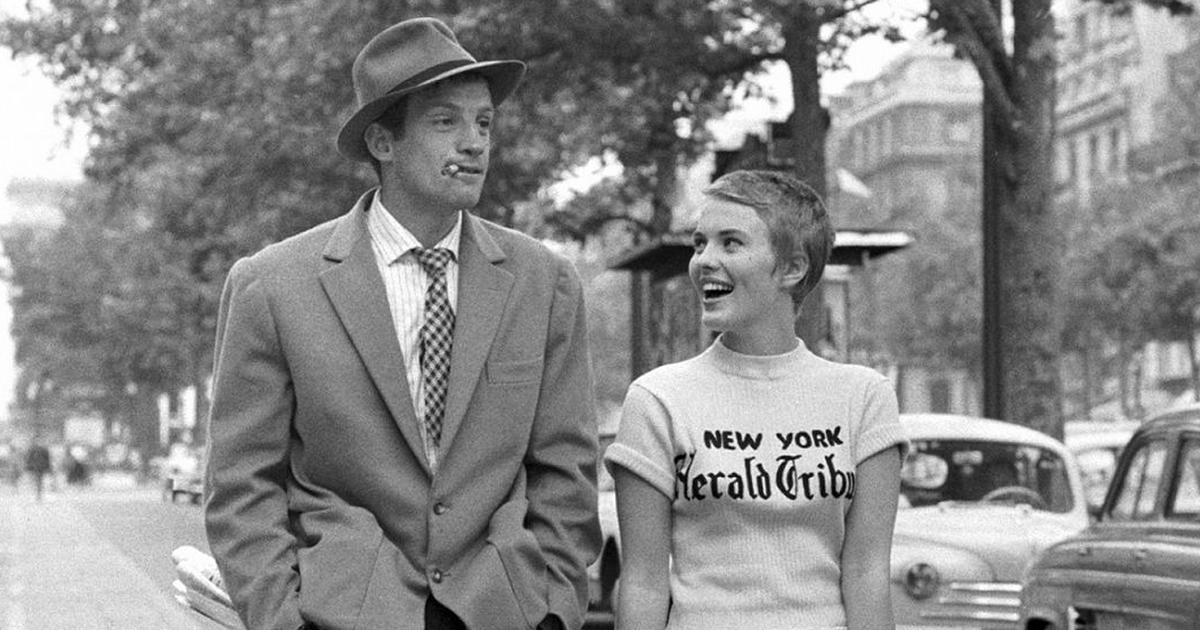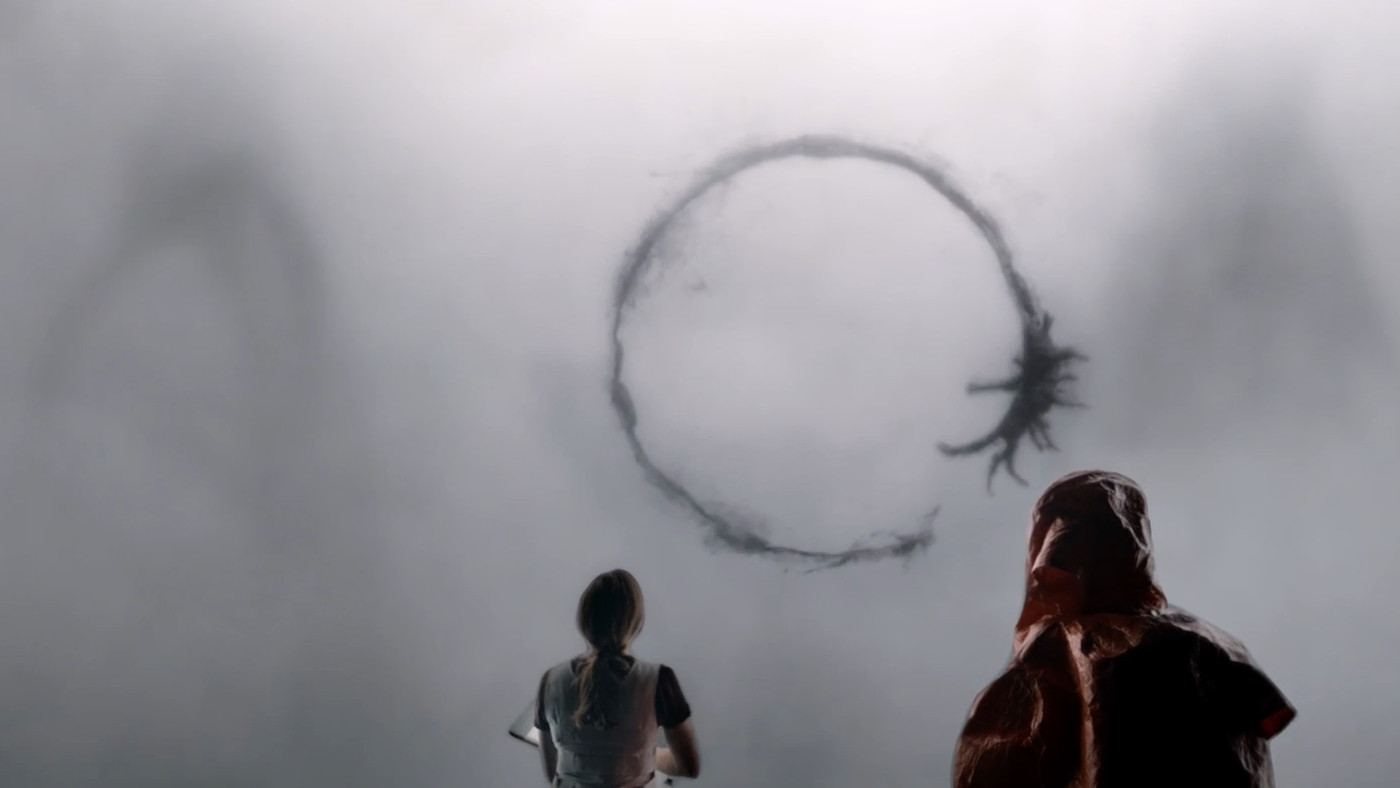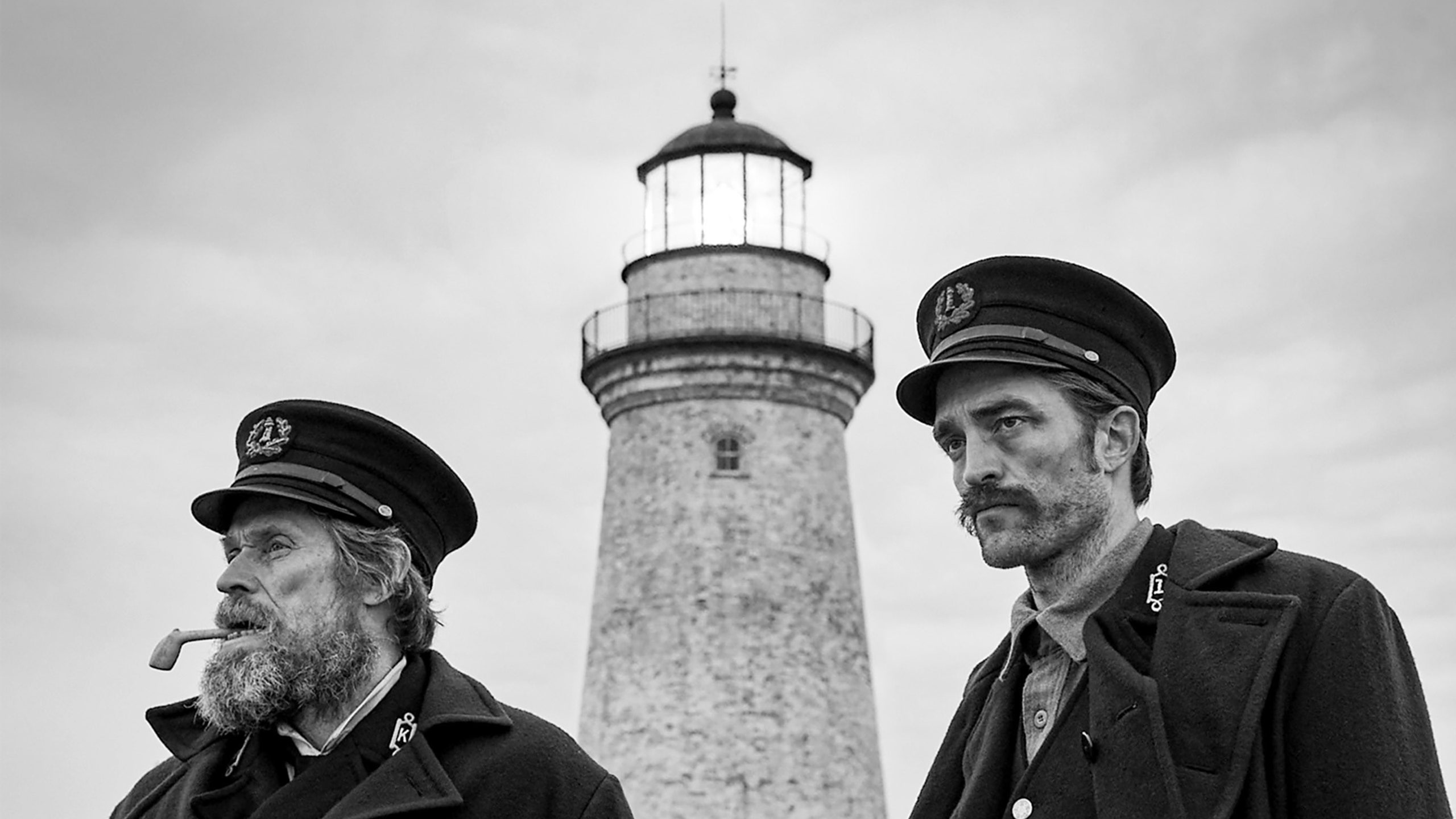A Career in Color with "The Lighthouse" and "Midsommar" Colorist Joe Gawler

Gordon Burkell (GB) - Every week we are joined by a film professional to chat about their craft and careers. Today I'm joined by Joe Gawler, a colorist whose work includes "Arrival," "Midsommar," "Solo: A Star Wars Story," and "Run Lola Run" amongst so many other projects. We were chatting a bit before and you mentioned that you had done the remastering of over 100 criterion films?
Joe Gawler (JG) - Yeah, well, certainly close to 100! For me to talk about how my feature film colorist career got started, I would start by how I came to New York around 2000. I was a commercial colorist doing commercial spots and Super Bowl spots and life was good. There was no real feature film or digital intermediate process at that time. It was all photochemical finishing, so my sights weren't really set on feature films at that time. I had gone to film school and stuff like that, but I was happy doing the work that I was doing. Then I got introduced to the people from the Criterion Collection when they were doing LaserDiscs originally. They were remastering a lot of these titles for these high definition masters. The facility I was at in New York was called "The Tape House," which no longer exists, sadly. They had one of the first high def telecines, an early spirit data telecine that I got on to start remastering feature films. All of a sudden, instead of working off of a film negative, I'm working off of interpositives and working off of amazing, important movies. We did "Seven Samurai," "Juliet of the Spirits," "Breathless," Fellini and Kurosawa films. Then all of a sudden, some of the filmmakers that were still alive, would come in. So I'm sitting with Richard Linklater or Wes Anderson or Jim Jarmusch and I'm experiencing how these people are really cool! It was a different energy than the commercial work. So while both are rewarding they work a little bit of a different part of your brain. There is a major difference when you're working with a bunch of agency creatives versus filmmakers on a movie that they've made.
For me that was what moved me from doing primarily commercial work. I still do a lot of advertising, but I'm mostly known now for my feature film work. Doing more and more of those titles once this digital intermediate process became a reality on the East Coast, I was one of the two or three people that had this kind of street cred as a feature film guy that worked in this digital world. That's how I started doing long form digital intermediate for theatrical release and moved to Technicolor. When they built a new studio in the West Village and started doing films like "The Devil Wears Prada" and working with Wes Anderson on "Darjeeling Limited"; it just kind of built from there. It was really a beautiful thing.

GB - What is it like to have to open up and start to touch cinematic classics like "Seven Samurai?" Is there a stress that you've got to maintain for this sort of iconic status?
JG - Good question! It's always the conversation I have with Lee Klein who is the technical director still to this day at Criterion. They're really great at scouring the planet for the best film elements to work with. Just to start, we may watch film prints that we know we're approved of or we may even see other video masters that had been approved years earlier. I'll take that information assuming the filmmakers are no longer alive, which is maybe the case for 50% of the Criterion titles, for each project. But you're right! Sometimes you see something that you think you could make better by putting a little window or shape or a key or something and you're like, "Well, you know, without Fellini here with me, maybe we got to stay pure to what we see.
They also do such a great job of all the restoration after we do the color. Once I finish grading a film and I get that blu-ray months later, I'm just blown away at everything else that happens after the grade. It's all the dust busting and fixing all the splices, and any film damage. You end up with this gorgeous remaster that hopefully I was able to bring something to with the color and staying true to what the filmmakers intent was.
GB - When the filmmakers are alive; they've made the film , they've done all the work on it, and because they are still alive they are now part of remastering it. Do you still come in and work with them on looks and stuff like that? Or is it just coming in and tidying it up a bit for the remaster?
JG - It's a little bit of both. The cool thing about shooting on film is there was so much information on the film, and now the scanning technology and the display technology keep improving. Every time you bring that film back up and scan it every 10 years or whenever, you can make it better not because the film is any better, but because the technology to capture what is in the film keeps improving. Now that we're in 4k, you can do high dynamic range and all of this kind of stuff for these films. I haven't remastered any older films in high dynamic range yet. I don't know where people sit on that. But yeah, it's just great to see how people have been experiencing the film on some kind of a video element. Then to see how much crisper, better resolution, and better color fidelity you can do without even having to make it different. You know what I mean?
GB - One of the first times I was impacted by color in a film was "Run Lola Run," by the way that they use the red in her hair and different things like that. Was there a moment where you saw a film, commercial or TV show and you're like, "that's what I want to do, I want to do the color." Or did you see a piece of artwork or something like that to influence you?
JG - My father was a photographer and so I spent a lot of time with him, in dark rooms and things like that. He was more of a semi-professional photographer. When I was going through school and starting off in post-production, being a Colorist was such an obscure thing. You don't really learn about it in school. I think now, people have access to these tools in their homes and on their laptops. When I was coming up, the thought of being a colorist wasn't really on my radar until I had an opportunity to get into a post facility and start making my way up the ranks. I was like, 'Wow, what's that cool machine that they put the negative on' and started getting mentored by a Colorist. I got started in Miami, actually, back in the 90s. I think if you're coming up into New York or L.A, there's a real apprenticeship and structure. The way you come up when I was coming up doing music videos and commercials in Miami, there was nobody in my way, as long as I wanted to put in the hours. I could ask the clients if I could use their film, after they finished with it and started testing and no one was in my way. I moved up very, very fast. After that I was hired to go work in New York in 1999 or 2000. That was a whole new kind of learning and a whole new discipline. Once I was in New York I couldn't just spin the dials and come up with crazy looks anymore.
GB - Did you ever spin the dials and someone goes, "What are you doing?" Or was there a sense that, "Oh, I better not do this here in New York?"
JG - In different markets, it operates differently. At the time in Miami, I would sit with the director and the cinematographer. In my first session in New York, I was with the editor and agency art director. That was a whole new experience for me. I literally was waiting for the session to start because I was waiting for the cinematographer and the director to show up. It doesn't work that way in New York. They're like, "What are you waiting for?" I'm like, "Where's the DP? How can we color correct the film without the DP?" They're like, "No, we don't do it that way." So that was like another learning experience.
GB - You mentioned that you had a mentor in Miami. Who was the mentor, if you're comfortable telling us... but also, what were some of the things that they taught you that you still use to this day? Or the tricks or little things that might have been specific to film but you find very useful on digital.
JG - I had an incredible mentor. He is no longer with us, unfortunately, but his name was Scott Gardner. He was super talented and a really fun kind of crazy guy. He taught me, "Hey, you need to know what you're doing, but then you gotta make sure you're having a good time doing it at the same time, or else what's the point?" So I've always tried to always keep Scott in the back of my mind. What would he do? Because he definitely pushed the creative limits. The other thing is just work ethic. Post-production, certainly with Colorists, we just work around the clock, seven days a week. I've got to be there for them 100%. I learned that from Scott as well, the guy just worked like crazy. I put in a lot of hours and I learned early on that if you want to make it as a Colorist, your filmmakers don't ever want to hear that you're not available. So you always make yourself available to them.
GB - How do you find a work and life balance in that situation? I see that you have a wedding ring on so your spouse is probably like, "Wait a second!"
JG - I'm very proud to have been able to maintain my relationship with my wife and have a wonderful family life. It's not as bad as it used to be. On top of being a Colorist, I also started my own company, Harbor Picture Company that is going on 10 plus years. So that, on top of everything else, just created this whole experience of having to be committed because everything was on the line. I built a post facility with my partner and crossed my fingers that it was going to work. Thankfully it did.

GB - You worked on "Arrival" and I was really lucky to interview Editor Joe Walker about it. He's very much philosophical about storytelling. So how did you work with the Director Denis Villeneuve and Joe to use color as a storytelling tool in that film?
JG - I'm really proud of everything with that movie. It's one of those dream scenarios where Denis is such a thoughtful, philosophical, collaborative guy. Joe Walker is also an incredibly sweet, talented, collaborative guy. And then Bradford Young, the cinematographer, is one of my dearest friends. He's kind of brought me along with him as his career has exploded over the years. So it was such a zen creative experience working with those guys. That's not always the case. So to have made this sci-fi movie that had all this poetry and emotion in it is so unique. That's a hard kind of movie to get made and thank God that people really connected and got it with that film. Emotionally, with the color, Bradford has a very special talent. He has this really dark and soft style which is just beautiful and poetic. I can't use that word enough with Bradford's work, he's just got a special sense. We've been kind of mind melding since his early Sundance movies. Bradford and I did a film called "Pariah" that won Best Cinematography at Sundance. Then Brad got another movie that was a little bigger and then all of a sudden, here we are in Montreal together on the set of "The Arrival" with this big spacecraft.
Creatively, Bradford and I have an understanding. It's really nice. He lets me bring what I bring to the table. That movie is all about a kind of softness and seeing into the shadows and about the emotional poetry of the film. It's not punchy with neon colors and vibrant, it's a much softer movie. And it got nominated for an Academy Award for cinematography, amongst many other things. That was also another just kind of amazing moment to see somebody that you started with early on in their career go off and get an Oscar-nomination, watch them walk down the red carpet, it was pretty awesome!
GB - It looks like several people in your company have gotten Emmy-nominations and awards. So you've grown the company quite well!
JG - Last year, four of the nine Best Picture nominees went through Harbor and I forget how many Best Cinematography nominees there are in any given year. We had over half of them. That's not going to happen every year. It may never happen again, but it was really special to have had so much critical acclaim last year.
When you do something and take a leap, like when we started Harbor, I just wanted to build an alternative to Technicolor and Deluxe. They are both great companies, nothing against them. I really wanted filmmakers in New York, because I decided to make my career here on the east coast, rather than go out to the west coast. I wanted to create a safe space for independent filmmakers, and we created this new dynamic at the time that really, people weren't doing. We had the editorial suites and the DI theater all on the same floor in the same building. So my ability to interact with the filmmakers happened over the course of six months or a year, rather than just those two or three weeks that you might have. It's very rewarding to see people supporting it and then having filmmakers like Jim Jarmusch editing at Harbor and walking around the halls. Your relationship and the dynamic with them just changes and it's been really cool.
GB - I'm assuming you did that on purpose? It wasn't just by accident that everyone was on the same floor was it? Or did you also incorporate a sort of a central bar or central area to get people to commune and to be candid with you guys?
JG - We have a wonderful kitchen. There's some days where there's nowhere else on Earth, I'd rather be! It's packed with amazing people and it's so cool. I remember one day when Ron Howard was there and Danny DeVito got off the elevator. They saw each other and they hugged and they were like, so happy to see each other. And I was just like, "Oh, my God, how cool is this!" In the beginning I was just hoping we could stay in business. I didn't know that it would become this thing. You do right by people and work hard and hopefully have success. The timing was impeccable, because all of these streaming services have created this pent up demand for content. Combined with tax credits and things like that New York's been really cooking for the last 10 plus years. So it was also just really great timing to be able to build something that the industry needed.
GB - There's been a couple times where they'll do a film and then they'll also release a black and white version. Like "Logan" or there was also "Mad Max: Fury Road." How do you think that impacts your emotional engagement with the film? In terms of working just with contrast in a sense with the black and white versus the colors? How do you think that would impact an audience viewing it?
JG - I respond very favorably to black and white. I did a film last year called "The Lighthouse" which was in black and white. It was just gorgeous! I think black and white can be very engaging. The color can distract in some ways if it's not done properly, I've worked on "Seven Samurai," "Breathless," "8 1/2," like these classic amazing, black and white films as well. They're gorgeous. I love black and white and I guess somewhat to the question, I will oftentimes if I have time on a project that I'm working on, once I've got the grade, I'll turn my display to black and white. I'll watch my work in black and white just to make sure that the bones of the image are right. If something feels weak or off and doesn't match to me in black and white, I'm like, I'm gonna have a problem with color. I sometimes run with two displays. I might have my main color display and then I might have another monitor in black and white, just to check myself for contrast and exposure. That's a little trick that I'll employ every now and again. Then the DP will come next to me and be like, "Oh, I like the black and white." They always love the black and white!
GB - When I was a kid, I had one of those little black and white televisions. Whenever I see black and white it always takes me back to that little tiny television. The vertical hold would always give way and you'd have to fix that.
JG - Recently, a friend of mine said their child ran into the room looking for the mother because they said the TV was broken. They ran in and the kid was trying to watch "Gilligan's Island." They were convinced there's something wrong with the television because there's no color.

GB - What films do you look to? Or what artists or filmmakers or writers do you look to for inspiration in your work?
JG - A lot of the work I do with the filmmakers that I collaborate with, over and over again, I do feel like we're kind of channeling the Dutch oil paintings. Trying to get that kind of beautiful, silky, milky, dark, kind of image. I have a lot of photography books, you know, like Todd Hido, Saul Leiter, and William Ableton, those books are at my studio. I don't get to my studio as often as I used to anymore, but the reason I bring that up is I like to look at them in the books on a printed surface. I don't like to necessarily have them on my computer, because it feels different. I learned this from Harris Vanitas, one of the all time great cinematographers that I was fortunate enough to work with on a number of projects. Harris would come in with a stack of books that weren't earmarked with specific pictures, and say, 'This is what I want to do.' He'd say, "Let's be quiet for an hour, and just flip through these images like calibrating our brain for what that looks like." Compare that now to saying, "Hey, I'm going to send you this image in an email." There's amazing resources, like shot deck and film grab and stuff now where you can go and find movies. But I like to kind of recalibrate my brain looking at stuff in books, because there's something about the contrast, and the quality of some of the colors that I like to try to reproduce. It's just helpful to get yourself in that mindset before jumping into color correcting an image.
GB - I have one last question I like to ask everyone I interview. A lot of people are watching streaming services because of the pandemic. Is there something you've watched over the pandemic that you're like, "Oh, everyone's got to check that out."
JG - Our great kind of service to the world was in the beginning of the pandemic, we actually did the post for "Tiger King." So that was like this crazy viral experience. For me, I saw a Korean film called "Minari" recently, which just hit me. It was beautiful, and I love that. As far as a streaming series, "Queen's Gambit" was the first thing in a long time where I just kept hitting next, next, next and found myself at three o'clock in the morning still not being able to get enough of the show! I thought that was just so well done, across the board, from the post-production, the design, the cinematography, the acting, everything. That was a fantastic show and it took me a while to finally get to it. I don't know why, but when I finally did it I was hooked. That was a great show.
GB - In terms of the Korean film, what's blown me away is after it seems like "Old Boy" came out in the early 2000's and Korea just started knocking it out of the park for like 20 years. They've got so many good films coming out of that country.
JG - Totally! Maybe we'll be seeing more of this now with streaming services like Netflix. I'm really finding myself connecting with a lot of these kinds of foreign films now. Just totally taking a whole different lens and creative ideas to these stories has been really, really fun.

